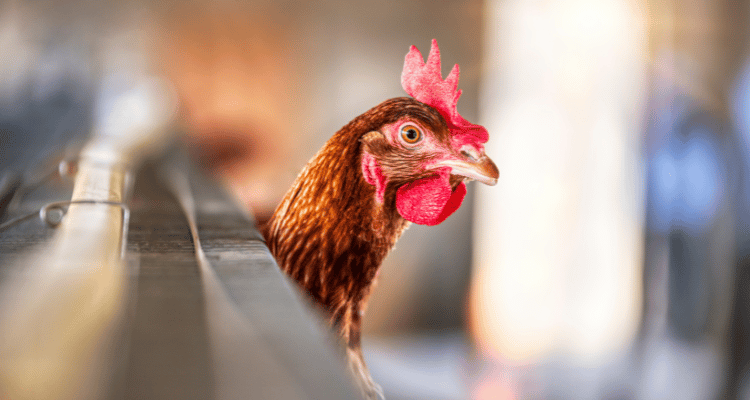Feeding for long-life ovaries in laying hens
Sustaining the production of quality eggs for longer in laying hens is key to reducing the economic cost and environmental impact of egg production. New data indicates potential biomarkers that can be measured for long-life ovaries in feeding trials designed to support productivity of ovaries for extended laying cycles.
by Gwendolyn Jones, Product Manager Gut Agility Activators, published in AllaboutFeed, December 2022
In terms of efficiency in egg production, major improvements have already been made, resulting in a reduction in the feed required per kg of egg mass produced, which translates into significant resource savings for the producer. For example, a study investigated the magnitude of life cycle impacts on egg production in the USA in 1960 compared to 2010. This study reported that using 1960 technology to produce the 2010 egg supply would have required 78 million more hens, 1.3 million more acres of maize and 1.8 million more acres of soybeans. What’s more, it showed the following reductions in the environmental footprint per kg of eggs produced in the U.S. over the 50-year time period:
- – 65 percent lower acidifying emissions
- – 71 percent lower eutrophying emissions
- – 71 percent lower greenhouse gas emissions
To increase sustainability in terms of the cost and environmental impact of egg production even further, the laying industry is pursuing increased laying persistency to extend laying cycles (up from 72 weeks to 100 weeks in a single cycle).
Research has shown that after the production of feed for hens, the purchase of new laying hens to replace the old flock contributed most to the environmental impact of egg production. By extending the productive lifetime of laying hens, their environmental impact could be further reduced, as few- er replacement flocks are needed. Keeping the birds longer will also reduce the contribution of the 17-week-old pullet to the cost per egg. Shorter production cycles require more
Ovarian ageing in laying hens
Maintaining high levels of production of good quality eggs in an extended production cycle requires hens to develop and maintain healthy and functional ovaries, among other factors. It is well known that the decline in ovarian functions over the egg production cycle is linked to ovarian ageing. One of the major causes of ovarian ageing is oxidative stress, which is caused by the decline in the antioxidative capacity of the ovary and the gradual accumulation of reactive oxygen species (ROS) over time. Oxidative stress has been shown to reduce the egg-laying rate in laying hens, reduce the follicle reserve and increase apoptosis in cells of ovaries.
The underlying mechanisms for the decline in the antioxidative capacity of ovaries of laying hens during the ageing process have been linked to the down regulation of the Nrf2 gene expression in the Nrf2-KEAP1 pathway. This signaling pathway is involved in the mobilisation of cellular antioxidant defenses to alleviate oxidative stress in tissues. Egg quality parameters such as albumen height, Haugh Unit (HU), egg- shell thickness and eggshell strength have been shown to be depressed when the Nrf2-Keap-1 pathway was impaired).
Factors accelerating ovarian ageing
ROS accumulate during metabolic activity, which can be exacerbated in periods of high productivity and when the bird is challenged by stressors in its environment or feed. For example, the exposure to heat stress is known to increase the production of ROS at the cellular level and so does the exposure to mycotoxins in poultry feed. Hence a lack of support to increase the birds’ antioxidative defense against ROS particularly during more challenging periods of the production cycle can lead to an increased rate of decline of the ovaries. This limits the ability to extend laying cycles, reduces egg production and decreases the commercial value of laying hens.
Strategies for maintaining ovarian productivity
A better understanding of the mechanisms underlying ovarian ageing and possibilities to mitigate oxidative stress is helping to find ways to prolong ovarian lifespans and thus potentially increase the length of productivity for egg production in laying hens.
Some plant extracts with antioxidative capacities applied to feed have successfully retarded the decline in antioxidative capacity of ovaries by increasing antioxidative activities. An in vitro study demonstrated that the natural plant extract lycopene was able to activate the Nrf2/HO-1 pathway, thus alleviating oxidative stress in ovaries. Homeoxygenase-1 (HO-1 is a Nrf2-downstream antioxidative enzyme, which prevents cellular apoptosis).
Recent feeding trials evaluating the impact of a gut agility activator on egg production performance parameters and antioxidative capacity of the ovaries in laying hens indicated the potential to sustain egg production longer. Gene expression of Nrf2 and certain downstream antioxidative enzymes linked to the Nrf2-Keap1 pathway were significantly increased in ovaries in response to feeding the gut agility activator, which was associated with increased egg-laying rates and improved egg quality parameters at 32 weeks of age (at the same time, HU and albumen height in eggs were significantly improved compared to hens on the control diet in the late laying period at 65 weeks of age).
Advances in nutritional strategies to support long-life ovarian function in combination with genetic progress in laying hens are paving the way for increased capabilities to further improve the economics and environmental impact of egg production while supporting food security and sustainability.
Relevant articles
How to get off to a good start in laying hens – early laying period
Effects of a gut agility activator on egg production in laying hens

